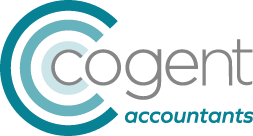This month saw us celebrate Father’s Day, but fathers and mothers alike often miss out on a helpful financial boost due to the complexities behind child benefits.
As a contractor or freelancer, you may have periods in the year when you are or aren’t working, which means that your income year to year fluctuates, making the rules surrounding this benefit even more complex.
Child Benefit stands as a key component of the UK’s family support system, offering a regular payment to assist with the costs of raising children.
If you are a contractor, it is essential to regularly re-evaluate your eligibility for Child Benefit and establish whether you are required to pay charges.
Here’s a quick recap on the basics of Child Benefit and how you can claim.
What do I get from claiming Child Benefit?
For the fiscal year 2025/26, Child Benefit is set at £26.05 per week for the eldest child and £17.25 per week for each additional child.
It covers children up to the age of 16 or 20 if they continue in approved education or training.
Contrary to some misconceptions, Child Benefit itself is not subject to income tax and is paid tax-free to all eligible recipients, regardless of their income level.
However, families where the highest earner’s income exceeds £60,000 are subjected to the High-Income Child Benefit Charge (HICBC), which effectively reduces the net benefit for these households through a tax charge.
This means that while the benefit itself is not taxed, the HICBC can diminish the financial advantage it provides to higher earners. The tax charge escalates by one per cent of the child benefit received for every £200 of income above £60,000 up to £80,000.
So, at £70,000 you’ll be paying back 50 per cent of the payments. At £80,000, the charge eliminates the child benefit entirely.
However, it may still be worth registering for Child Benefit even if you need to pay HICBC, because you can still benefit from National Insurance credits towards your state pension, and your children will still automatically receive a National Insurance number when they reach the age of 16.
How to claim Child Benefit
Only one person can get Child Benefit for a child, so you need to decide whether you or the other parent should claim.
If you live together, only one of you can claim the higher rate for the eldest child in the household.
Income variability poses a significant challenge for contractors in determining their eligibility for Child Benefit.
To establish whether you will need to pay HICBC, you will need to calculate your adjusted net income.
This is your total taxable income (including savings and dividends) before any personal allowances and minus charges such as Gift Aid.
Making use of the Government’s Child Benefit tax calculator can help you estimate your adjusted net income and ascertain your potential liability under the HICBC.
Furthermore, strategic financial planning, such as increasing pension contributions, can effectively reduce adjusted net income, potentially mitigating the impact of the HICBC.
